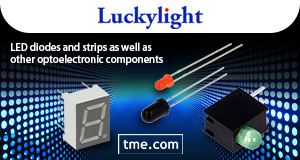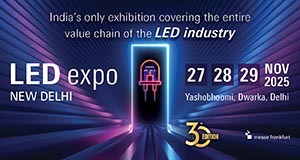Electrical Sectionalizer Market Size Worth USD 1,581.6 Million by 2034 | CAGR: 4.8%
Power distribution systems have become increasingly complex and sensitive to interruptions over the past decade. This has led to electrical sectionalizers gaining prominence as essential components of modern grid infrastructure. These intelligent switching devices automatically isolate faulted sections of overhead power lines, enabling faster service restoration and minimizing the impact of outages. Especially in regions with aging infrastructure, expanding electrification, or a growing share of renewable energy, the adoption of sectionalizers is rising rapidly. Let’s explore the fundamentals of electrical sectionalizers and explore the key factors shaping the electrical sectionalizer market landscape.
Electrical Sectionalizers: Introduction
Electrical sectionalizers are protective switching devices used in power distribution networks to automatically isolate sections of a circuit that have faulted. They are installed downstream from reclosers or circuit breakers and monitor current flow, as well as count fault currents. Sectionalizers open the circuit if a preset number of faults are detected within a certain time frame, preventing further faults from propagating. This coordination allows utilities to limit outages to only the affected section, avoiding a total shutdown. Sectionalizers come in various forms, including hydraulic, programmable electronic, and vacuum-insulated types.
Market Stats
Polaris Market Research examines the electrical sectionalizer market to register sustained growth during the projection period, 2025 to 2034. The market was valued at USD 993.0 million in 2024. It is anticipated to reach USD 1,581.6 million by 2034, registering a CAGR of 4.8% from 2025 to 2034.
Types of Electrical Sectionalizers
Electrical sectionalizers come in various types depending on application, operation method, and mounting configuration. The main types include:
Pole-Mounted Sectionalizers
Pole-mounted sectionalizers are the most widely used sectionalizers. These sectionalizers are installed on overhead distribution lines and positioned directly on utility poles. They are ideal for isolating faults in outdoor environments, especially in rural and suburban grids. Pole-mounted sectionalizers are rugged and easy to maintain. They are commonly coordinated with reclosers to detect and isolate temporary or permanent faults.
Pad-Mounted Sectionalizers
Pad-mounted sectionalizers are enclosed in tamper-resistant cabinets at ground level. They are used in underground or hybrid distribution networks and are suitable for urban areas, industrial parks, or commercial zones where aesthetics, safety, and access control are important. These units often support loop configurations and provide switchgear functionality for underground cable systems.
Overhead Distribution Line Sectionalizers
Overhead distribution line sectionalizers are specifically tailored for medium-voltage overhead distribution networks. These sectionalizers are designed to handle environmental challenges such as temperature fluctuations, humidity, and wind. They are typically used in conjunction with automatic reclosers and are engineered to withstand high fault currents while maintaining service continuity in unaffected areas.
View More Information @ https://www.polarismarketresearch.com/industry-analysis/electrical-sectionalizer-market/request-for-sample
Major Market Growth Drivers
The electrical sectionalizer market is experiencing growth driven by several factors. These include:
Grid Modernization Initiatives
The rising global energy demand and aging infrastructure have prompted utilities to prioritize the modernization of power distribution networks. Smart grid investments focus on real-time monitoring, self-healing systems, and automation to minimize outages and enhance service quality. In this context, electrical sectionalizers play a crucial role. They enable automatic fault isolation and coordinated switching with reclosers, forming the backbone of intelligent distribution systems. Electrical sectionalizers also help achieve grid automation goals by reducing manual intervention and enhancing system stability.
Rising Weather-Related Outages
Climate change has intensified the frequency and severity of natural disasters, including storms, wildfires, and flooding. These extreme weather events can trigger widespread power outages, especially in areas with overhead lines. Sectionalizers mitigate the impact by isolating only the faulted section of the grid, while keeping the rest of the grid operational. This rapid response minimizes customer downtime and reduces strain on the utility crew during emergency restoration efforts. Their value is particularly evident in regions vulnerable to seasonal disruptions, such as coastal and forested zones.
Applications Across End-Use Sectors
Below, we’ve given an overview of the applications of electrical sectionalizers across various end-use sectors:
Utility Distribution Networks: Electrical sectionalizers are a critical component in modern utility grids, especially for medium-voltage distribution systems. Utilities use sectionalizers to isolate faults rapidly and maintain service continuity during disruptions. These devices help improve grid automation and support smart grid initiatives by working in tandem with reclosers and SCADA systems.
Industrial Facilities and Campuses: Large-scale industrial zones, mining operations, and educational or corporate campuses rely on consistent power delivery to avoid costly downtimes. In these environments, sectionalizers help maintain operational continuity by automatically isolating faulted segments of the internal power distribution network.
Residential Subdivisions and Rural Communities: Sectionalizers play a crucial role in enhancing grid resilience in suburban neighborhoods and rural areas, where power lines are often overhead and vulnerable to environmental hazards. When a fault occurs, sectionalizers quickly isolate the affected zone. That way, power is restored more quickly to unaffected homes.
To Conclude
Electric grids are evolving to meet the demands of modern energy distribution. The electrical sectionalizer market is enabling this evolution by enhancing grid resilience, safety, and operational efficiency. The ability of electrical sectionalizers to isolate faults, support smart automation, and integrate with renewable and decentralized energy systems makes them indispensable across various applications.












